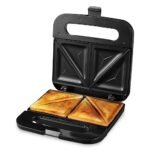Craving a taste of Turkey? Dive into the world of Turkish Eggs, a delightful dish that’s sure to satisfy your savory cravings. This traditional Turkish breakfast combines poached eggs with a rich, garlicky yogurt sauce and a spicy, buttery topping. It’s a perfect blend of creamy, tangy, and spicy flavors that will elevate your morning meal.

Ingredients List
Main Ingredients
- 2 eggs
- 3 tbsp thick yogurt (at room temperature)
- Salt, to taste
- Pepper, to taste
- Paprika, for garnish
- Red chili flakes, for garnish
- Olive oil, for cooking
- 1 tbsp butter
- 1 tsp crushed green chili and coriander or parsley leaves paste
- Fresh garlic paste, to taste
Required Kitchen Tools
When preparing Turkish Eggs, having the right kitchen tools can make the process smoother and more enjoyable. Here are the essential tools you will need:
- Small Saucepan: For poaching the eggs perfectly.
- Mixing Bowl: To combine the yogurt and garlic paste.
- Small Frying Pan: For making the spicy butter topping.
- Slotted Spoon: To remove the poached eggs from the water.
- Serving Plate: To beautifully present your Turkish Eggs.
Having these tools on hand will set you up for a successful Turkish Eggs cooking experience.
Preparing the Yogurt Sauce
The yogurt sauce is a key component of Turkish Eggs, providing a creamy and tangy base that complements the poached eggs perfectly. Follow these steps to prepare the yogurt sauce.
Mixing the Yogurt
In a mixing bowl, combine the thick yogurt with a pinch of salt, pepper, and fresh garlic paste. Mix well until the yogurt is smooth and the garlic is evenly distributed. This garlicky yogurt sauce will serve as the flavorful base for the poached eggs.
Preparing the Garlic Paste
If you don’t have pre-made garlic paste, you can easily make it at home. Simply crush a few garlic cloves and blend them into a smooth paste. Add this to the yogurt mixture for a robust garlic flavor.
Plating the Yogurt Sauce
Once the yogurt sauce is ready, spread it evenly on your serving plate. Create a slight well in the center to hold the poached eggs later. The yogurt sauce should be at room temperature to ensure the best texture and flavor when served.

Poaching the Eggs
Perfectly poached eggs are the heart of Turkish Eggs, providing a rich and runny yolk that blends beautifully with the creamy yogurt sauce. Follow these steps to achieve perfectly poached eggs every time.
Preparing the Water
In a small saucepan, bring water to a gentle simmer. Add a pinch of salt to the water. The water should be at a gentle simmer, not a rolling boil, to ensure the eggs cook evenly and maintain their shape.
Poaching the Eggs
Crack each egg into a small bowl or ramekin. This makes it easier to slide the eggs into the water without breaking the yolk.
- Create a Gentle Swirl: Use a spoon to create a gentle swirl in the simmering water. This helps the egg whites wrap around the yolk, resulting in a neatly poached egg.
- Add the Eggs: Gently slide each egg into the center of the swirl. Let the eggs cook for about 3-4 minutes, until the whites are set but the yolks are still runny.
- Remove the Eggs: Use a slotted spoon to carefully lift the poached eggs out of the water. Allow any excess water to drain off.
Placing the Eggs
Gently place the poached eggs on top of the prepared yogurt sauce. The warm eggs will slightly melt into the yogurt, creating a luscious and creamy combination.
Seasoning
Sprinkle a pinch of salt and pepper over the poached eggs. This adds an extra layer of flavor and enhances the overall taste of the dish.
Making the Spicy Butter Topping
The spicy butter topping adds a rich and flavorful finish to the Turkish Eggs. This step involves melting butter with spices and herbs to create a delightful drizzle over the poached eggs and yogurt sauce.
Melting the Butter
In a small frying pan, melt 1 tablespoon of butter over medium heat. Be careful not to let the butter burn; it should melt gently and become slightly foamy.

Adding the Spices
Once the butter is melted, add the following ingredients:
- Crushed Green Chili and Coriander Paste: Add 1 teaspoon of the paste to the melted butter. This adds a fresh and spicy kick to the topping.
- Fresh Garlic Paste: Add a small amount of fresh garlic paste for an extra layer of flavor. Adjust the quantity to your taste preference.
- Paprika: Sprinkle a pinch of paprika into the butter. This gives a lovely color and a mild smoky flavor.
- Red Chili Flakes: Add a pinch of red chili flakes for extra heat. Adjust the amount based on your spice tolerance.
Cooking the Butter Mixture
Stir the butter mixture continuously, allowing the spices to infuse the butter for about 1-2 minutes. The butter should take on a rich, golden color and a fragrant aroma.
Drizzling the Spicy Butter
Remove the pan from heat and carefully drizzle the spicy butter over the poached eggs and yogurt sauce. Ensure an even distribution to cover all parts of the dish. The warm, spicy butter will meld with the yogurt and eggs, creating a harmonious blend of flavors.
Garnishing
For the final touch, sprinkle a bit more paprika and red chili flakes over the top, if desired. You can also add a few fresh coriander or parsley leaves for a burst of color and freshness.
Serving and Enjoying Turkish Eggs
Now that your Turkish Eggs are beautifully prepared and garnished, it’s time to serve and enjoy this delicious dish. Proper serving and presentation can elevate your dining experience, making it even more enjoyable.
Serving Suggestions
Turkish Eggs can be served as a delightful breakfast or brunch option. Here are a few serving suggestions to enhance your meal:
- Toasted Bread: Serve the Turkish Eggs with slices of toasted bread or pita. The bread is perfect for dipping into the creamy yogurt and runny egg yolks.
- Fresh Vegetables: Add a side of fresh vegetables, such as sliced cucumbers, tomatoes, and bell peppers. The freshness and crunch of the vegetables complement the rich flavors of the dish.
- Herbal Tea: Pair your Turkish Eggs with a cup of herbal tea, such as mint or chamomile, for a refreshing and soothing beverage.
Presentation Tips
To make your Turkish Eggs look as good as they taste, consider these presentation tips:
- Colorful Plate: Serve the dish on a colorful or patterned plate to make the vibrant colors of the yogurt, eggs, and spices pop.
- Neat Arrangement: Arrange the poached eggs neatly on the yogurt base and drizzle the butter in an attractive pattern. A well-presented plate adds to the dining experience.
- Garnish Thoughtfully: Use fresh herbs and spices to garnish the dish, adding both flavor and visual appeal. A sprinkle of fresh parsley or coriander leaves can make a big difference.

Enjoying the Dish
Now, it’s time to dig in and enjoy your Turkish Eggs. The combination of creamy yogurt, perfectly poached eggs, and spicy butter creates a symphony of flavors and textures. Each bite offers a delightful mix of tangy, rich, and spicy elements that are sure to satisfy your taste buds.
Storage Instructions
If you have leftovers, here’s how to store them properly:
- Refrigeration: Transfer any remaining Turkish Eggs to an airtight container and store in the refrigerator. They can be kept for up to 2 days.
- Reheating: To reheat, gently warm the eggs and yogurt in the microwave or on the stovetop. Be careful not to overheat, as the eggs can become tough and the yogurt may curdle.
Final Thoughts
Mastering the Turkish Eggs recipe brings a taste of Turkish cuisine to your table. This dish is not only delicious but also visually appealing and easy to prepare. Whether you’re serving it for breakfast, brunch, or a light meal, Turkish Eggs are sure to impress with their rich flavors and beautiful presentation. So, gather your ingredients, follow the steps, and enjoy the delightful experience of making and savoring Turkish Eggs.










































